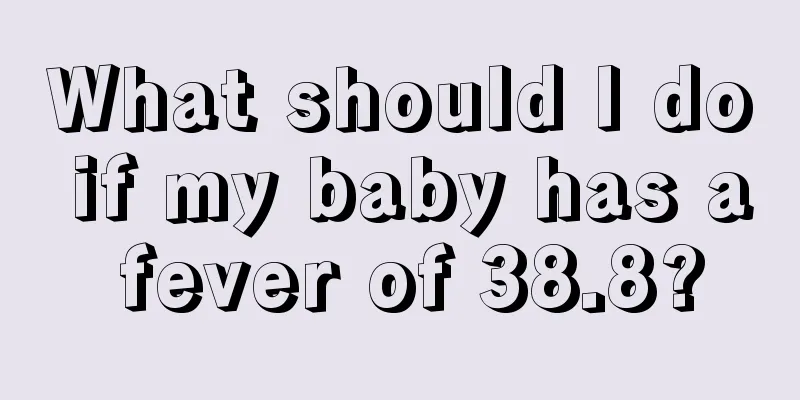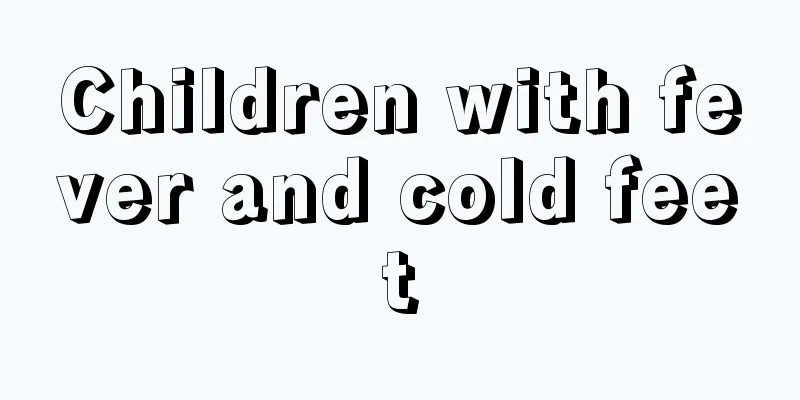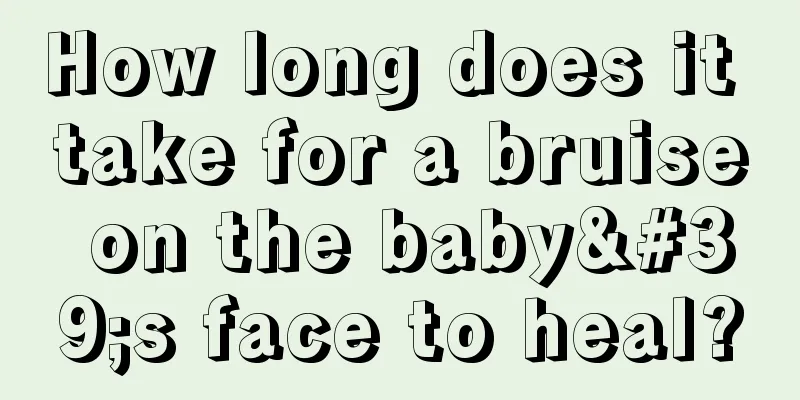What should I do if my baby has a fever of 38.8?

|
It is a very common phenomenon for children to have a fever. Generally speaking, if the child's fever is below 38.5℃, there is no need to go to the hospital. Proper home care can relieve the symptoms. However, if the child's fever reaches 39 degrees or above, this may be considered a high temperature and you must go to the hospital in time for antipyretic treatment. What should you do when a child has a fever? A fever of 39 degrees is considered a high fever. Generally speaking, if the child's complexion is normal or flushed, he or she can be safely cared for at home; if the complexion is dull, yellow, blue, or purple, and the eyes are dull, it means that the condition is serious. When a child has a fever, parents should not blindly reduce the fever. Instead, they should go to the hospital to find out the cause of the fever and provide appropriate treatment based on the results. Because fever is a normal defense reaction of the body, colds, leukemia, and even other diseases can all show symptoms of fever. A high fever of 39 degrees is indeed serious, but most people mistakenly believe that a high fever that does not go away will damage the brain. In fact, whether high temperature can damage the brain is related to the temperature and duration. Only when the body temperature exceeds 42 degrees and persists for a long period of time will the body's proteins begin to denature, causing direct damage to the brain! Most of the diseases that affect intelligence and brain development are meningitis or hypoxic encephalopathy caused by constant convulsions. These are all caused by the course of the disease itself, not the temperature; and most of these diseases will have symptoms of persistent high fever (even if the temperature is below 42 degrees). This has led to the common misconception that high fever can damage the brain. The basic way to distinguish between the two is to observe the child's appetite and energy. In the case of serious infections such as meningitis or sepsis, children will have poor appetite and activity, become drowsy all the time, and may vomit if the intracranial pressure increases. Therefore, when a child has a fever, parents must "observe the child's words and expressions" and seek medical attention immediately if they find the above symptoms. If a child has a fever of over 39 degrees for a long time, he must go to the hospital. Sometimes, more serious illnesses may only be around 38 degrees Celsius. Therefore, when a child has a fever, parents should observe the child's complexion, mental state, and whether there are any convulsion symptoms. Fever is just one of the symptoms of the disease. What is more important is to find out the cause of the fever. Because children's bodies currently cannot control temperature very well, some children may have a fever of over 40 degrees when infected with a minor illness. When children have a fever, parents must pay attention to their children's complexion and expression. If the above symptoms appear, they must be diagnosed in time. |
<<: What should I do if my baby’s toenails grow into the flesh?
>>: How to ensure the height of a one year and four month old baby?
Recommend
Why do white spots appear on baby’s face?
As we all know, vitiligo is a very scary disease....
Reasons why a five-month-old baby doesn't like to breastfeed
In daily life, many newborn babies gradually show...
Is nebulization useful for hand, foot and mouth disease?
Babies with hand, foot and mouth disease may show...
One and a half year old baby oral herpes
If a one and a half year old baby develops oral h...
Can babies eat raw cucumbers?
Many children need extra attention to their diet ...
My baby's ears are swollen, what's going on?
There are many reasons for swollen ears, the most...
Why does a child’s sweat have a sour odor?
The appearance of sour and smelly body odor usual...
If your child’s skin is itchy and he keeps scratching, parents can do this!
Babies are very naughty during this period. They ...
What should I do if my four-month-old baby has yellow urine?
Generally speaking, when the human body is in a h...
What department should I go to for pigeon breast in children?
Pigeon chest is a medical disease, and many child...
What causes migraine in children?
Migraine usually occurs in adults. When some chil...
What is the development of a four-month-old baby?
After the baby is born, the brain and bones of th...
What to do if your child's hair turns white
Everyone's hair quality is different. When yo...
What should I do if my child has congenital tonsil enlargement?
After we get sick, many of us will suffer from to...
How to take care of a baby’s blocked nose?
It is easy for babies to have nasal congestion wh...









